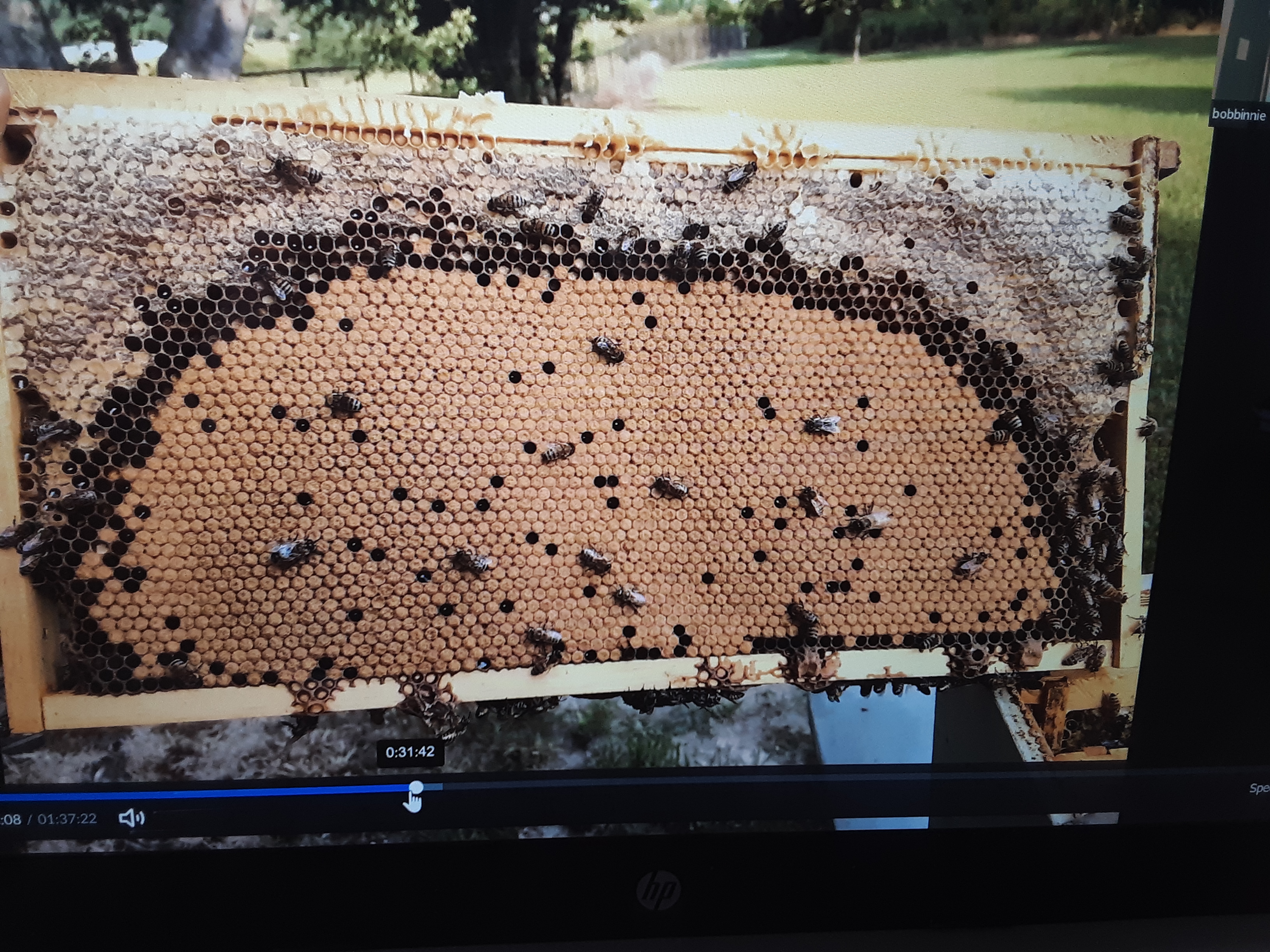Difficult to diagnose; related to the environment; colony dwindling seasonally and not developing. Bees fanning air into and out of colony. Bee bearding on front of or below colony entrance.
Bees can tolerate high (and low) temperatures. If, however, temperatures remain at an extreme for an extended period of time and bees lack access to honey stores or water, their bodies can develop heat shock proteins. If temperatures remain high they may suffer from cell water loss and die.
In their attempts to keep the temperature of the hive within normal range, bees beard at front of or below the colony entrance. For hottest temperatures, bees fanning air into and out of the colony might be observed. The bees may place water droplets so the circulating air crosses the water drops, creating an evaporative cooling effect.
Heat extremes during shipment of queens has been found to lead to poor colony/queen performance with spotty brood patternspotty brood pattern:
capped worker cells that are not uniformly solid within the brood sphere; numbers of cells lacking brood of the same brood age; indicative of poor colony queen or poor health
and shortened queen life. Queen failure may be due to heat stress. Shipment of individual queens, without queen cage attendants, may show heat stress.
During heat stress, cannibalism of larva or cappedcapping:
the covering that bees add over comb cells containing fully ripened honey or to cap brood that has reached the pupal stage; bee bread cells are not capped pupa may occur. Larvae attempting to crawl from their cells might occur.
pupa may occur. Larvae attempting to crawl from their cells might occur.
Bees may fail to keep honey stores intact during heat stress with fermentation or honey bubbling evident and/or honey may run from cells.
thermoregulation, bee bearding, cannibalism of brood, fermented honey from beeswax cells
McAfee A, et al. 2020. Vulnerability of honey bee queens to heat-induced loss of fertility. Nature Sustainability 3: 367–376. https://www.nature.com/articles/s41893-020-0493-x